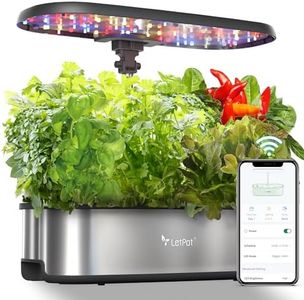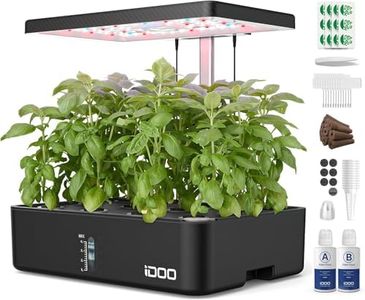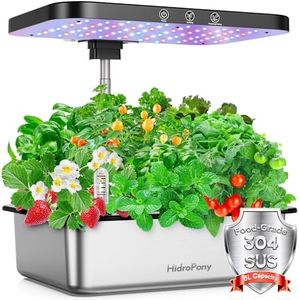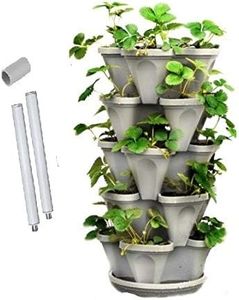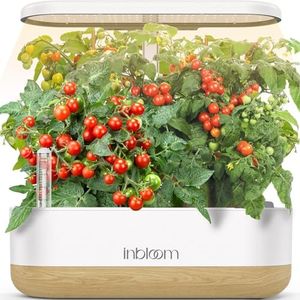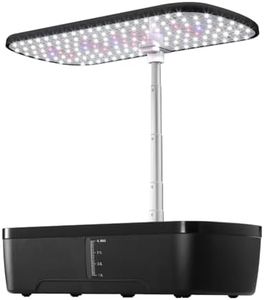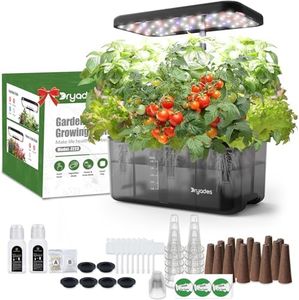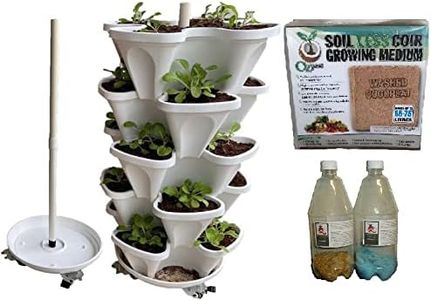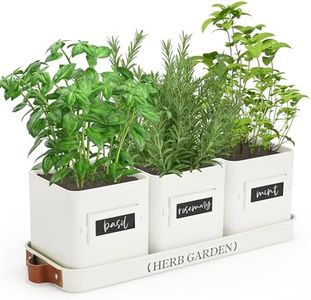We Use CookiesWe use cookies to enhance the security, performance,
functionality and for analytical and promotional activities. By continuing to browse this site you
are agreeing to our privacy policy
10 Best Indoor Herb Growing Kits
From leading brands and best sellers available on the web.Buying Guide for the Best Indoor Herb Growing Kits
Indoor herb growing kits are a wonderful way to have fresh herbs at your fingertips year-round, right from your kitchen or any indoor space. Picking the right kit can make herb gardening easy and enjoyable, even if you have little experience. The most important thing is to consider how much space you have, how much effort you want to invest, and what kinds of herbs you wish to grow. Understanding the main features of these kits will help you find the one best suited to your lifestyle and herb preferences.Lighting SystemThe lighting system is crucial because herbs need ample and consistent light to grow well indoors, where natural sunlight can be limited. Some kits come with built-in LED grow lights, while others rely on your window. Kits with built-in lights are great for spaces with little sunlight or for year-round growing. LED lights vary in wattage and features; basic systems provide standard lighting, mid-range options offer timers or adjustable brightness, and premium kits mimic natural sunlight most closely. If you're growing herbs in a dark spot or want minimal maintenance, opt for a built-in light system. If you have a sunny windowsill and enjoy hands-on gardening, a light-free kit might suit you fine.
Watering MechanismThe watering mechanism determines how much effort you'd need to spend keeping your herbs hydrated. Some kits are self-watering, with reservoirs that only need refilling every week or so, while others require manual watering. Basic kits need you to water frequently and monitor soil moisture, suitable if you like daily plant care. Self-watering kits are more forgiving if you travel or tend to forget watering. Assess your day-to-day routine: if you're busy or want minimal fuss, self-watering is a good pick; if you enjoy interacting with your plants, a standard kit can be more satisfying.
Seed Variety and ExpandabilitySeed variety refers to the types and number of herbs you can grow at once. Some kits come with a single herb, a curated set (like basil, parsley, mint), or give you the option to use your own seeds. Expandability means you can add more pots or grow new herb types over time. If you want to experiment with different herbs or expand your garden, look for kits that support a range of plants or let you swap out seed pods easily. If you just want easy access to one or two favorites, a simple fixed-set kit will suffice.
Size and CapacitySize and capacity tell you how many herbs you can grow at once and how much counter or shelf space the kit needs. Smaller kits hold one to three plants and fit well on small windowsills or apartment kitchens. Medium kits support three to six herbs, offering a balance between variety and space. Large kits can grow more plants but need a bigger area. Choose a size that fits your available space and matches how many herbs you realistically want at the same time.
Ease of UseEase of use covers how simple the kit is to set up, maintain, and harvest from. Some have features like reminders for watering or feeding, clear instructions, or plug-and-play systems that are beginner-friendly. Others are a bit more involved, needing you to mix soil or nutrients. If you're new to gardening or want something low-effort, seek out kits marketed as 'easy' or 'beginner-friendly.' If you enjoy learning and tinkering, more advanced kits offer greater customization but require more attention.
Nutrient DeliveryNutrient delivery means how your herbs get the food they need to thrive. Some kits use pre-mixed soil and fertilizer, others use hydroponic (water-based) systems with added nutrients, which can help plants grow faster. Hydroponics often requires less mess and can be more efficient but needs you to add nutrition to the water. Soil-based kits are more traditional and forgiving for beginners. If you want fast growth and are comfortable with adding nutrients, hydroponics is worth considering. If you prefer a familiar and hands-on approach, soil might feel more natural.
